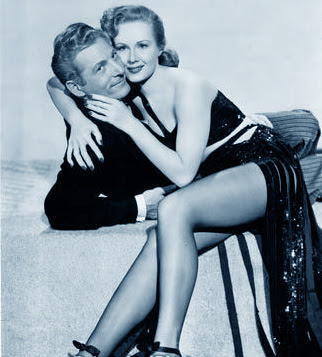With his amazing concentration, perfectionism and athleticism, Danny Kaye was a natural at golf. Yet he didn’t pick up a golf club for the first time until he was in his 30s, during his first trip to Hollywood in 1942.
“When I first came to California,” Kaye recalled to a reporter, “I had never seen a golf course in my life. But I went out one day with (agent) Abe Lastfogel, and he talked me into hitting just one ball. It went 200 yards straight down the middle. I told Abe there was nothing to it. Golf was a game for old men. A few weeks later, I went out on the golf course again and hit the ball only six feet. So I hired a teacher, bought some clubs, and spent six hours a day practicing for five weeks. The first time I played eighteen holes I broke a hundred.”
Actor Benny Baker, whom Kaye brought along from his Broadway show Let’s Face It to play a similar GI role in his first movie, Up in Arms, recalled a typical afternoon with Kaye on the golf course: “I’d call him, he’d say, ‘I’m going to Hillcrest. Want to walk around with me?’ I said, ‘Sure, I’ve got noting else to do.’ He was playing golf with Jack Benny and a couple of other people, but he didn’t hear anything. Jack Benny was complaining something happened with the program he was unhappy with, and Danny was just playing the golf. He couldn’t hear anything. He couldn’t see anything. He just saw that ball and where he wanted to put it. That’s the difference. That’s a drive that makes anybody a success.”
Kaye was golfing in his typically silent nature another afternoon with Jack Benny, who finally said, “Please talk—it’s so boring!” So Danny gabbed nonstop for the next three holes, until Benny finally yelled, “Oh, shut up!”
One day in Palm Springs, Kaye was playing golf with Benny, Bob Hope, and Charlie Resnick. Danny had been playing terribly that day and was cursing every shot, using only the filthiest words of his vocabulary. Benny tried to quiet him, but Kaye continued with his outbursts. When they arrived at the seventh hole, the group had caught up with a pair of little old ladies and asked if they might play through. With the women waiting, Danny stepped up to tee off. He hit a lousy shot and turned to see his friends watching him with worried looks “Oh, dear!” Danny sighed, as Jack ran away in hysterics. The two women remained confused.
By the late 1950s, Kaye was a five-handicap, regularly shooting in the low 70s. But then he discovered flying and, suddenly, lost all interest in golf. He said it just wasn't mentally challenging enough.



